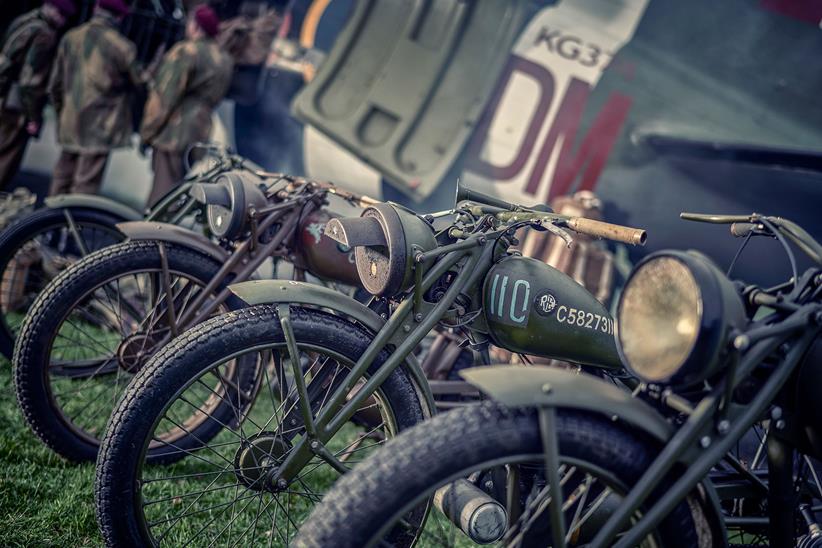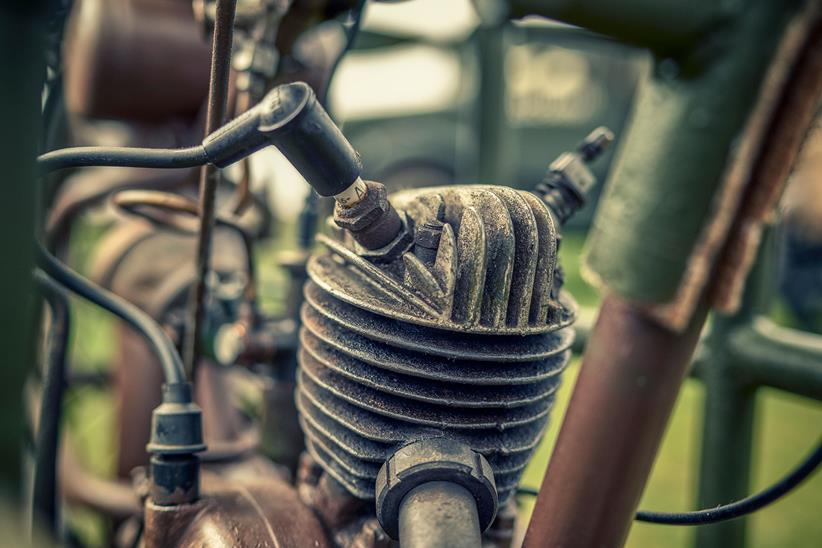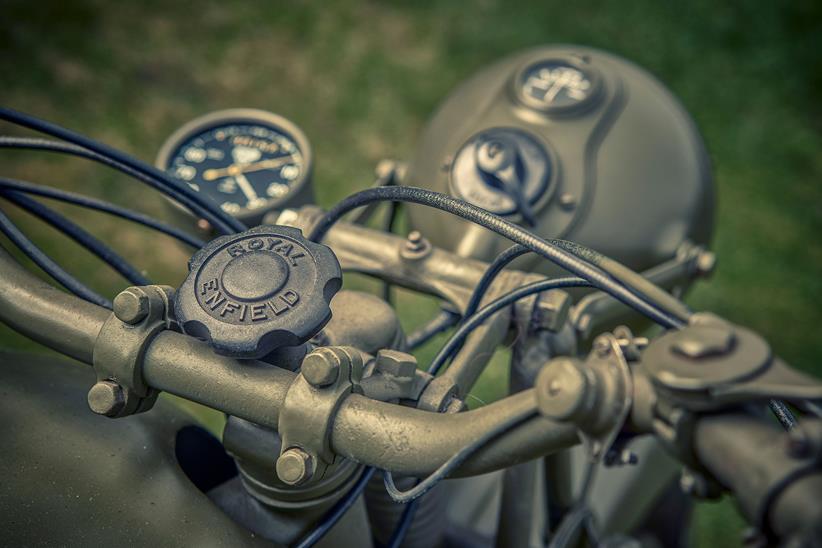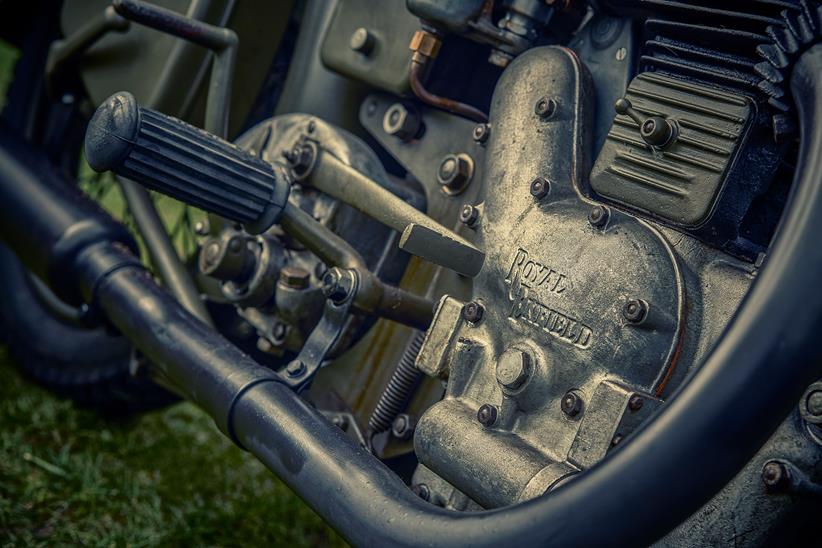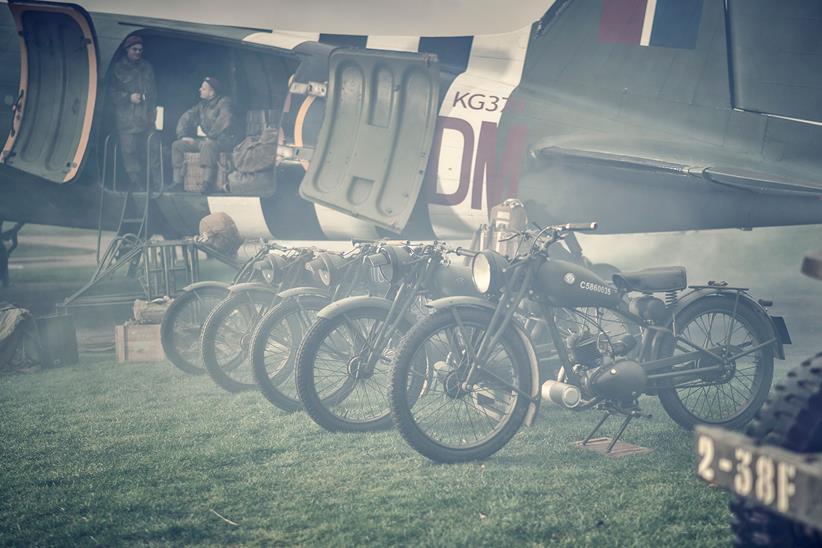VE Day celebrations: remembering the Royal Enfield 'Flying Flea'
It’s 75 years since World War II officially finished as the Allies accepted Germany’s surrender on May 8, 1945.
And as VE Day celebrations remember big characters and big machines, there was also one very little machine that played a massive part in Britain, and its allies, winning the war; the Royal Enfield Flying Flea, as it became known…
Motorcycle helps mobilise the troops
![]()
At the outbreak of war in 1939, Britain had no airborne forces. But, impressed by German paratroopers, the Fallschirmjäger, Churchill ordered the formation of a 5,000-strong parachute and gilder-borne corps in June 1940.
Just before World War Two, the Nazis leaned on the DKW’s Dutch distributor Stovkis & Sonen, demanding the company fire its Jewish directors or lose the right to sell the German-built bike. Rather than succumb, the firm took the RT100 to Royal Enfield in Britain who reverse-engineered the bike and produced a similar machine, the Model RE, with a bigger, 125cc engine.
After evaluating prototypes (pictured), the War Department placed an order for 4,000 Royal Enfield WD/RE models. The bike’s compact size, lightness and ability to be dropped from aircraft soon earned it the nickname the ‘Flying Flea’.
Cradle caps the bold plan
![]()
To protect the bike from buckling under the impact of a parachute landing, tubular steel cradles were drop-tested by the army and built by Royal Enfield. Modifications were made to the bike itself.
The handlebars rotated to fit within the cradle and the kick starter and footrests were replaced with folding items. The seat height was raised and an expansion chamber added to muffle the exhaust for stealth behind enemy lines, while the stock Amal carburettor was swapped for a Villiers unit with a large air filter.
‘A phenomenal piece of equipment’
![]()
“The Flying Flea was a phenomenal piece of equipment developed in very short time and adapted for airborne use,” said Airborne Museum Curator Jon Baker. “It’s a good example of industry stepping up to the plate in wartime conditions.”
Hardwick Hall in Derbyshire became the elite new regiment’s training camp. Here thousands of volunteers from different army units across the country were turned into paratroopers: A young soldier who passed basic Para training was Glaswegian Geoff Pattinson from the Royal Armoured Corps who answered a notice requesting volunteers for the new regiment.
“I wanted to be with the RAF but couldn’t get in so I thought the next best thing would be parachuting,” Geoff said. “I wanted to get up in the air.”
Recruits ‘ring the bell’
![]()
Successful recruits were rewarded with a 50-mile speed-march from Hardwick Hall to RAF Ringway (now Manchester Airport) for parachute training. Here they learned to jump from obsolete RAF bombers such as the Whitley and the Albermarle through a crude hole in the floor. But the aperture wasn’t big enough for taller recruits, who routinely head-butted the edge on the way out, a misfortune known as ‘ringing the bell’.
Related articles on MCN
- Royal Enfield Classic 500 Pegasus Edition pays tribute to Flying Flea
- Clinical trials: Dougie Lampkin trains Riders for Health workers in Lesotho
- Yamaha RD350LC at 40
“On three occasions I came out with a bloody nose!” said veteran John Jeffries, who served with the 4th Parachute Brigade. “And if you did that, you owed them all a pint! Stupid! They should buy you a pint!”
Unstoppable force
![]()
The new airborne force was growing rapidly into a formidable modern fighting machine and within three years there were two full airborne divisions of 10,000 men each.
Meanwhile, the Flying Flea was issued to soldiers gearing up for airborne assault on German-occupied Europe. This versatile little bike could be used for reconnaissance, troop transport and battlefield communications. Its strength, lightness and go-anywhere handling made the compact Royal Enfield almost unstoppable.
Light bike gives a lift
![]()
The Flea weighed just 56kg and its one-and-a-half gallon fuel tank gave a range of around 150 miles at about 35-40mph. It had a three-speed, hand gear change and, with a very low compression piston, its 126cc engine could run on the poorest quality fuel.
The front forks were pressed steel blades with suspension provided by three strong rubber bands. It was simple, crude and a little bouncy but it was cheap to make and it worked.
Bikes away
![]()
John Jeffries remembers squeezing into a Dakota loaded with two Flying Fleas in their drop cradles: “There were 20 of us in there but they crammed certain things down the centre in between us.
“We had a hell of a job to get out. But we usually got those out first, then we’d follow them, so it gave us an alleyway to go through. As soon as they got over wherever it was, the dispatcher threw them out because they all had their independent parachute. They came down on their own and whoever was riding it was pretty close to it when they went out through the door.”
D-Day drama
![]()
The first division to land on Sword Beach at the D-Day landings was the 3rd Infantry Division, which was equipped with 600 Flying Fleas. Alongside another lightweight motorcycle, the James ML, the Royal Enfield WD/RE was used to coordinate the D-Day landings. As Allied forces fought to establish a beachhead, hundreds of Flying Fleas and James machines streamed from landing craft.
Negotiating heavily mined, obstacle-strewn terrain under constant enemy fire, motorcycle-mounted ‘beachmasters’ directed soldiers off landing craft and across the beaches, rounding up stray troop columns like two-wheeled sheepdogs. D-Day’s commanders later praised the lightweight motorcycles and their riders, for their part in the landings’ success.
Heading East
![]()
Airborne troops also played an important part in the war in the East. The vast British Indian Army fighting the Japanese in Burma had its own airborne force, initially formed by two British battalions.
These men helped train Indian forces, forming the 44th Indian Division. Using all the same equipment as their British counterparts, the Indian paratroopers soon proved themselves in battle, making their names at the Battle of Sangshak which blunted the Japanese advance to the battles of Kohima and Imphal.
“As the war in Europe drew to a close it was realised that British airborne forces could help bolster the Indian airborne forces,” said Airborne Museum curator Jon Baker. The Flying Flea was used extensively.
Biking boom after the war
![]()
With Japan’s surrender after the US Air Force atomic attacks on Hiroshima and Nagasaki, World War Two was finally over.
After the war, demand for cheap transport and plentiful ex-War Department bikes created a motorcycling boom. In 1945, thousands of surplus motorcycles were bought back by motorcycle dealers and manufacturers to be repainted, refurbished and sold to an eager British public.
Few Flying Fleas survived
![]()
More than 20,000 civilian Fleas were made but only a few dozen original military bikes are thought to have survived. Most are now in the hands of museums, or private collectors like Matthew Moore from Derby.
“They were disposable pieces of transport designed to make just one trip across the Channel,” said Matthew, who bought his first Flying Flea aged 16. “They weren’t expected to last much longer than the end of the operation.”
You can read more first hand accounts of using the Flying Flea from veterans in Wednesday’s MCN.
